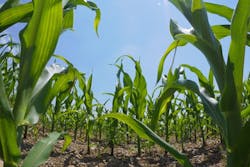A new report from the Columbia University Water Center, in conjunction with Veolia Water and Growing Blue, reveals that businesses and cities in some of America's most iconic regions are now under even greater risk of water scarcity.
"All cities and all businesses require water, yet in many regions, they need more water than is actually available—and that demand is growing," said Upmanu Lall, director, Columbia Water Center. "In response, many tools have been developed to help businesses assess their water risk. But these tools actually understate the risk of climate variations. The new study reveals that certain areas face exposure to drought, which will magnify existing problems of water supply and demand."
By utilizing a new water research metric called the Normalized Deficit Cumulated (NDC) index in the America's Water Risk: Water Stress and Climate Variability study, Columbia was able to estimate measures of water risk to the nation's major cities and agricultural regions.
Columbia developed the NDC as a risk metric for evaluating historical periods of drought, using more than 60 years of precipitation and the current water use pattern for U.S. counties. As a result, the NDC measurement tool reveals a more accurate depiction of the discrepancy between water use and water availability.
"Research already proves that the demands on our water systems, both urban and rural, have never been greater," said Ed Pinero, chief sustainability officer for Veolia Water. "And in some very populated areas, this new research shows that the risk of water shortages has never been higher."
The U.S. metropolitan areas of Washington, D.C.; New York City; Los Angeles and San Diego are of greatest concern, which could impact approximately 40 million Americans. Numerous counties in 46 states are also facing the same challenge of experiencing drought-induced shortages. Joining the metro areas on the list are the breadbasket regions of Nebraska, Illinois and Minnesota, which produce almost 40% of the nation's corn, a key ingredient in many of our foods and an essential feed source for livestock.
The findings highlight the importance of "blue growth," a strategic approach to water management that ensures water remains an enabler of economic growth, not a limitation.
"As the U.S. continues to face increased water scarcity, there is mounting concern over the sustainability of our water resources," said Lall. "But we must understand that water scarcity is not the only risk. Droughts will create an additional impact that needs to be understood, because drought magnifies the effects of scarcity. Gaining a better understanding of these risk factors is critical to reducing the potential severity of prolonged shortages."
With the support of Veolia Water , the America's Water Risk: Water Stress and Climate Variability study was conducted by Columbia University's Water Center. The academic group develops projects to analyze water supply chains and examine particular sets of water issues with a long-term perspective, working on both policy and technical analyses.
"By wasting less, polluting less and becoming more efficient and sustainable water managers, we can achieve higher water productivity levels and reduce our overall water stress," said Pinero.
Further underscoring the importance of this research, a recent survey by the World Economic Forum ranked water supply crises as the leading global risk when considering crisis likelihood and impact.
Read the full report here.
Source: Growing Blue


